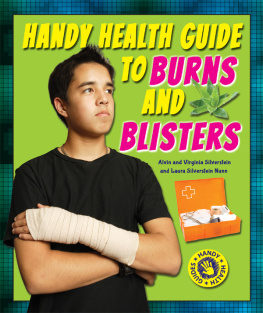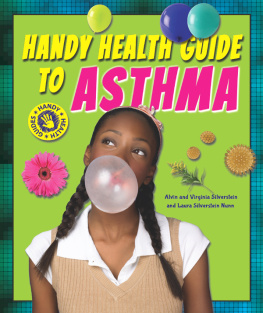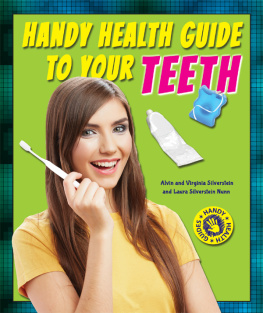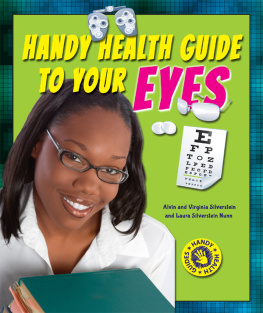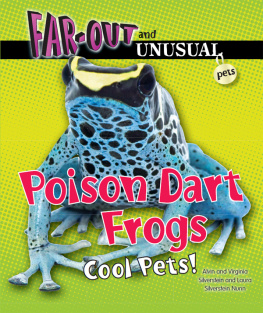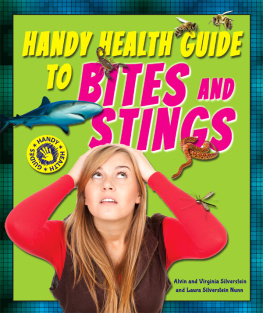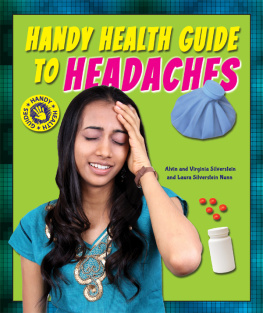OUCH!
We all face health problems once in a while. Maybe you have come down with the flu or you have burned yourself on the stove. Perhaps you have asthma or diabetes. Some people need glasses to see better or are allergic to bee stings. These handy guides teach you about your health and how all the parts of your body work together to keep you healthy most of the time.
About the Author
Dr. Alvin Silverstein is a retired professor of biology at the College of Staten Island, City University of New York. Virginia Silverstein translates scientific Russian and is a professional author. Together they have written more than 200 books for young people. Laura Silverstein Nunn has coauthored more than 100 books with her parents.

Image Credit: Thinkstock/Photos.com
Be careful when you are cooking at a hot stove so that you do not get burned.
Hot! Dont touch! This is probably one of the first warnings your mom or dad gave you. If you were like many little kids, you may not have taken their word for it. You may have accidentally found out the hard way: If you touch a hot stove, you will get burned, and burns can really hurt.
Anybody can get a burn. Burns happen when your skin is damaged by fire, hot objects or liquids, certain chemicals, electricity, or the sun. Most burns are minor and can be treated at home. Serious burns require immediate medical attention or may even mean a stay in the hospital. Some burns are so serious that they may cause lasting health problems, disability, or even death.

Image Credit: Mike Devlin/Photo Researchers, Inc.
This is a minor burn caused by a hot object.
Most burns can be prevented. By following some helpful tips, you can reduce your chances of getting burned.

As many as 2 million people in the United States get burned every year. Roughly 70,000 people go to the hospital for severe burns. Those numbers dont include the many burns that are not reported because they are minor and are taken care of at home.

Image Credit: Shutterstock.com
Your body is wrapped in a protective coatingyour skin. The skin is the largest organ of the body. It makes up as much as 15 percent of your body weight. Like any other organ of the body, your skin does important jobs that help keep you healthy.
Skin is soft and elastic, but it is strong. It can handle all kinds of wear and tear, and can even repair minor damage. It protects you, keeping dangerous chemicals and most germs from getting inside your body and harming you. At the same time, it keeps fluids inside and protects the body from drying out. Skin helps to keep our temperature constant, cooling us in hot weather and holding in warmth when it is cold outside. The skin is also a sense organ, letting you know about the world around you. Your skin is indeed remarkable, but it can get damaged in various ways.

Image Credit: SPL/Photo Researchers, Inc.
This is what skin layers of your fingertip would look like if you magnified it hundreds of times.
The skin is made up of billions of tiny cells, each too small to see without a microscope. Actually, the cells in the outer part of your skin are dead. But new skin cells are constantly forming underneath them. They will move outward and eventually die, too. Each skin cell lives an average of only 28 days.
The dead cells on the outside of your skin form a thick, tough protective layer. They are mostly made of a protein called keratin. You may never notice it, but some of the dead cells in this outer keratin layer are continually flaking off.
The keratin layer protects the living cells inside your body. It keeps out disease germs and also keeps body fluids from leaking out.
Just beneath the keratin layer, there are two layers of living skin cells. The top layer is called the epidermis. The epidermis contains the cells that form the keratin layer when they die. The epidermis is very thin. It is only about as thick as a sheet of paper.

Image Credit: Shutterstock.com
Here is a close-up look inside the skin. A minor burn affects just the epidermis, but more serious burns affect the dermis and hypodermis, too.
The epidermis lies on top of another layer of living skin cells called the dermis. The dermis makes up about 90 percent of the skins thickness. The dermis contains nerve endings. Nerves send messages from the dermis to your brain about things you touch or feel. With a single touch, you can tell if an object is rough or smooth, hot or cold. If you touch something that is too hot, or sharp enough to hurt you, nerve endings send pain messages to your brain that may make you say Ouch!
Skin cells need food and oxygen to live and grow. These important materials are carried in the blood by millions of tiny blood vessels that are found in the dermis. There are no blood vessels in the epidermis. Thats why a shallow scratch doesnt bleed.

When you shake someones hand or wash your hands, you may lose as many as 40,000 dead skin cells in one minute!

Image Credit: Shutterstock.com
When you burn your skin on a hot stove, skin cells are damaged by the heat. These skin cells send out chemicals that act as alarm signals. They tell the body something is wrong. The alarm chemicals also trigger the surrounding nerves, causing you to feel pain.
Some of these chemicals cause plasmathe clear fluid in bloodto leak out of nearby blood vessels into body tissues, making them swollen. The body tissues also become hot and red. This process is called inflammation.
As the heat kills skin cells, layers of the epidermis and possibly the dermis become separated. Plasma then seeps into the gap and fills it up, causing a bubblelike blister to form.

Image Credit: Shutterstock.com
Your brain controls many parts of your body by sending and receiving messages. Nerves carry those messages to and from the brain.
Meanwhile, the damaged blood vessels also release chemicals that send signals. They call in jellylike white blood cells that can move through blood and tissues.
White blood cells can move most easily through inflamed, fluid-filled tissues. They squeeze out of tiny holes in the walls of blood vessels and move through the fluid in the gaps between cells. The white blood cells act like a clean-up squad. When they come into contact with the damaged tissue, they eat up dead cells and bits of dirt in the wound.

